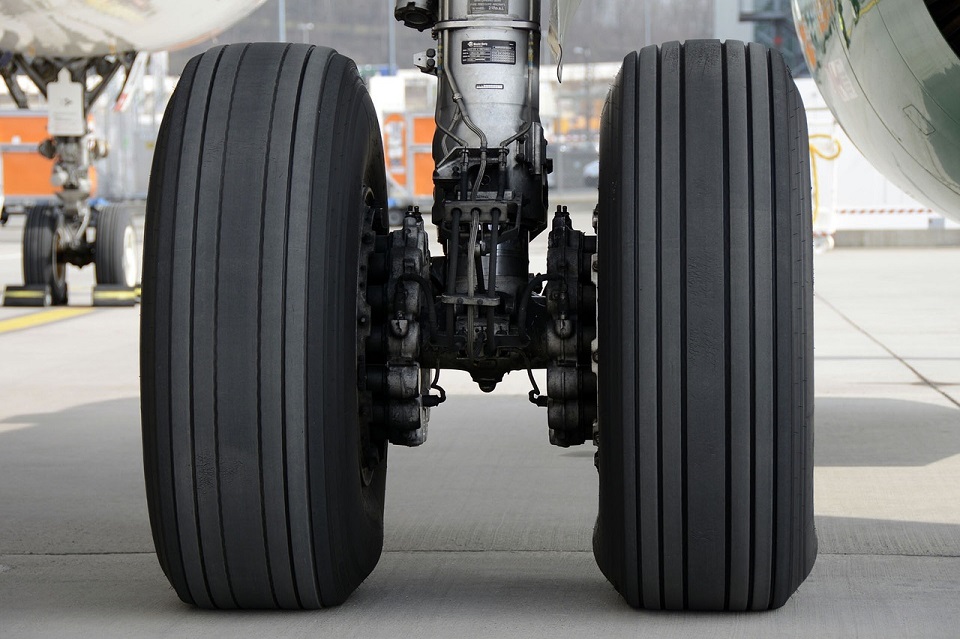Airlines
Why do airplane tires cause smoke at touchdown?

When an aircraft touches down during landing, the appearance of smoke is a common sight. This occurrence arises from a combination of factors related to the landing procedure and the characteristics of the tires themselves.
As the aircraft descends and prepares for touchdown, the tires are stationary. Upon contact with the ground, they rapidly accelerate from a standstill to an average speed of 240 to 260 km/h. This sudden burst of motion creates friction between the tires and the runway surface, resulting in the emission of smoke.
The smoke stems from the considerable heat generated by the friction between the rubber tires and the asphalt runway. This heat is sufficient to cause the rubber to almost vaporize, resembling the smoke produced when a bike tire skids against the road.
Several variables influence the intensity and occurrence of smoke during landings. The frequency of landings a tire experiences within a specific timeframe, such as within 24 hours, impacts its level of wear and tear. Airlines rigorously inspect tire conditions before each flight, promptly replacing them if any damage or signs of deterioration are detected to uphold safety standards.
The design and resilience of aircraft tires are influenced by the type of aircraft and its operational demands. For example, the tires used on an Airbus A330-200 differ in composition and load capacity compared to those designed for conventional automobiles. Furthermore, environmental factors such as runway temperatures and altitude variations contribute to tire performance.
Aircraft tires are meticulously engineered to endure the demanding conditions of takeoff and landing. They incorporate multiple layers of nylon for reinforcement and a wire core to prevent slippage on the rim. Moreover, these tires are filled with nitrogen, offering superior properties compared to conventional compressed air for aviation purposes.

Airlines
Air India to Launch aircraft maintenance training institute in Bengaluru

Air India, one of India’s leading global airlines, is set to establish a Basic Maintenance Training Organization (BMTO) in Bengaluru.
This institute will offer a comprehensive Aircraft Maintenance Engineering (AME) program certified by the Directorate General of Civil Aviation (DGCA). The program will follow an integrated 2+2 year structure, combining classroom learning with practical, hands-on training.
This initiative is part of Air India’s broader goal of creating a robust aviation ecosystem in India. With plans to expand its fleet and strengthen its operations, the airline aims to build a skilled workforce of maintenance engineers, making the organization self-reliant while supporting its ambitious transformation journey.
This country tops visa rejections in the popular Schengen countries
To bring this vision to life, air india has partnered with Bengaluru Airport City Limited (BACL), a subsidiary of Bangalore International Airport Limited (BIAL). Together, they will develop a state-of-the-art facility spanning 86,000 square feet at Bengaluru Airport City.
This purpose-built campus will feature modern classrooms, well-equipped laboratories, and qualified trainers to deliver world-class education and training. The institute is expected to become operational by mid-2026.
The BMTO will be located close to Air India’s new 12-bay Maintenance, Repair, and Overhaul (MRO) facility, also set to open in Bengaluru by early 2026. The AME program will begin with two years of academic coursework, followed by two years of practical training at the MRO, ensuring students receive hands-on experience adhering to industry standards.
Sanctions & Engine Issues Ground Half of Russia’s A320neo fleet
In the meantime, Air India has introduced a Cadet AME program in collaboration with reputable institutions in Bengaluru and Hyderabad.
This ensures continuity in its commitment to developing skilled aircraft maintenance engineers while the BMTO facility is under construction. The program also allows students to pursue a bachelor’s degree through university partnerships, enhancing their career and academic opportunities.
With this initiative, air india plane aims to address the growing demand for skilled professionals in aircraft maintenance and engineering, air india new planes contributing to the development of India’s aviation sector and creating specialized career paths for aspiring engineers.
-

 Aviation2 months ago
Aviation2 months agoMicrosoft Flight Simulator Raises $3 Million to Bring Back the An-225 Mriya
-

 Airlines2 months ago
Airlines2 months agoQatar Citizens Can Travel to the United States Without a Visa
-

 Aviation2 months ago
Aviation2 months agoQatar Airways bans these new Electronic Devices on plane
-

 Airlines2 months ago
Airlines2 months agoJapan Airlines Rolls Out Free Domestic Flights to International Passengers
-

 Defence2 months ago
Defence2 months agoWhich Country Has the Largest Fleet of Fighter Aircraft?
-

 Airport2 months ago
Airport2 months agoWestern Sydney Airport Welcomes Its First Plane After 6 Years of construction
-

 Travel2 months ago
Travel2 months agoQatar Airways Launches Four Additional Flights from Amsterdam
-

 Aviation2 months ago
Aviation2 months agoDid you know ? Once Boeing 747 carried 1088 passenger in 1991








